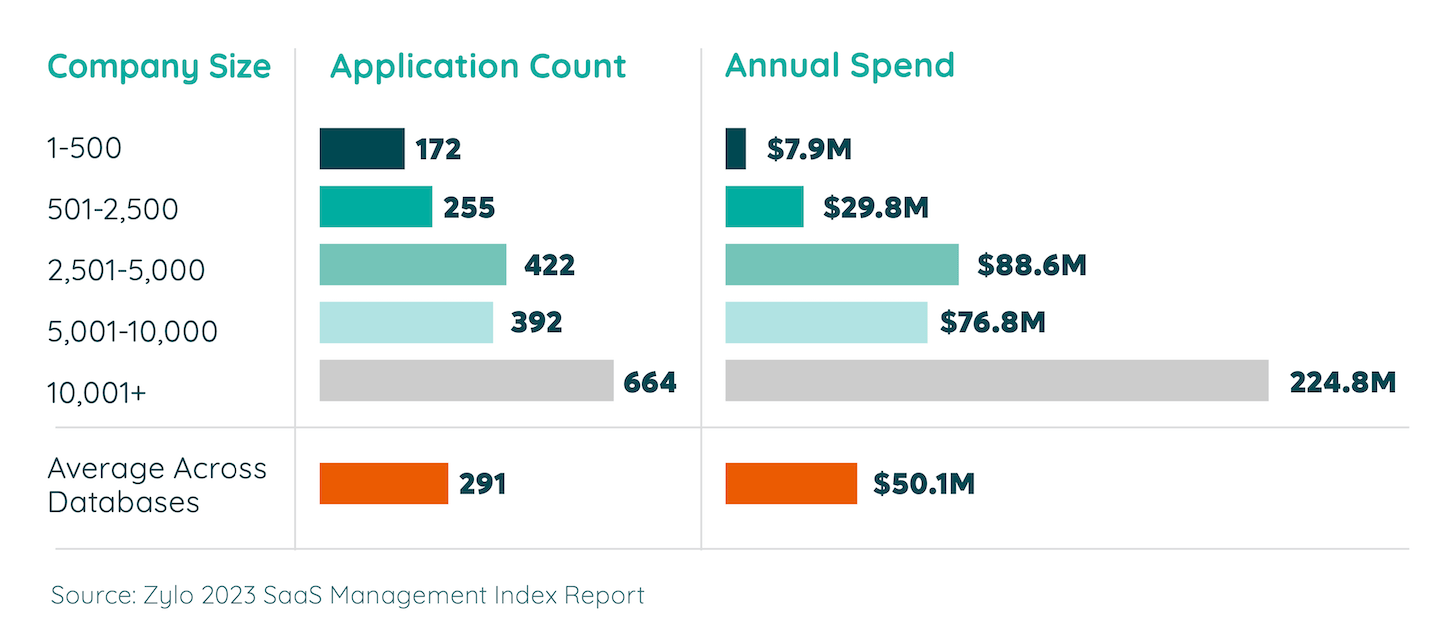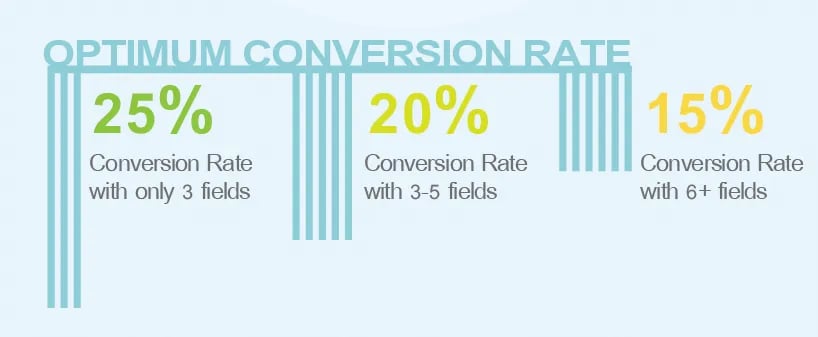Using Data To Drive Revenue
At the heart of any business, it is likely that you will find some variant of a tech stack; that is a series of tools, systems and processes that define how the business operates. For some smaller businesses, this might be in the form of a spreadsheet and a few processes, but as businesses scale, you should start to see the introduction of more structured tools, such as a CRM (Customer Relationship Management), perhaps some dedicated tools by department to manage data. As organisations grow and become more sophisticated, the data they manage also expands and evolves and that data lives within these tools and feeds the processes and daily workflows of the team.
According to the Zylo 2023 SaaS Management Index report, the size of the average tech stack, and the associated cost of licences and maintenance can be enormous. Therefore, ensuring the data that you are feeding into your tech stack is optimised is key to ensure you’re maximising return on your essential tech stack investment.

This article considers how the data held by a business can be better harnessed and utilised across your entire tech stack and, more importantly, how it can be used to drive revenue. Whether you’re a scaling business or are simply looking to squeeze more revenue from your existing databases, data is the key to effective revenue generation.
Why Data Quality is Important
The value of high-quality data cannot be over-emphasised. The quality of your data will be defined by a number of elements, including the source, how rich the data is and how up to date it is.
In this case, quality is synonymous with cleanliness and accuracy. Correct, up-to-date data is vital to all elements of successful digital marketing and is the building block of effective online revenue generation.
Most businesses have some data, some more than others. Volume isn’t always the same as value though, and a little clean data will be of greater value than a lot of out-of-date data. That said, a lot of good, clean, relevant data is clearly of more value than a little of it!
If you are looking to grow your data source, the first, and most important thing to say is don’t start buying lists to fill your CRM. The data will likely be unreliable, out of date and the contacts won’t be engaged with your brand in any way. Whilst it might seem appealing to buy a list as a shortcut to establishing a database or enhancing the data you already have; you will likely end up getting your domain blacklisted for sending spam emails and end up reducing the level of engagement with genuine prospects in your CRM. Instead, look to generate leads through existing marketing channels like PPC campaigns, website forms, webinars, and events. These leads will be higher quality as they have actively engaged with your brand.
Single Source of Truth
You will often hear CRM platforms talking about the Single Source of Truth. This simple concept is key to effectively unlocking the power of your data. Simply put, a Single Source of Truth is a singular platform, database or spreadsheet that is the master record when it comes to your data. It should contain all your data in its most up-to-date form. It is the record which all your teams rely on and go to when they want to ensure they are accessing correct and up-to-date information. It also refers to a place where all the data related to a customer can be found, for example, all contact information communications, deals, interactions, tickets etc.
This data can live in more than one place (for example a Sales CRM and a Marketing CRM) simultaneously, as long as you have invested time and effort in aligning these systems and ensuring there is a robust integration and sync between them.
Without this in place, your teams will be working from siloed, potentially out-of-date data and conflicting reports, which means they will be making decisions based on incorrect, or outdated data, leading ultimately to poor results.
Using a CRM
If you’re working from spreadsheets, establishing a Single Source of Truth in that format would be a very manual process, longwinded, time consuming and susceptible to error. This is where a CRM platform comes in. Not only does it make it simpler to maintain and access your data, but it will allow you to start bringing in elements of automation to help maintain and enrich that data without manual intervention, thus creating efficiencies and reducing administrative load.

Data Enrichment
Enriching your data adds to its value and increases the ways it can be used to engage your audience. It also allows for more detailed segmentation and effective targeting across a range of demographics. Data enrichment will also happen as you interact with your contacts, recording those interactions, purchases, downloads, sign-ups etc. The greater the scope of data you have, providing it is accurate and up to date, the better.
There are various tools available that can help enrich data for you too, especially if you’re a B2B business. For example, HubSpot Insights just needs a business email address, and it can populate dozens of data fields including business address, revenue, number of employees, LinkedIn URL and so on.
This means that getting a contact’s work email address is fundamental, as it will allow you to capture extra information about the contact without adding any friction to the buyer’s journey.
If you’re looking at a B2C model, then consider using progressive profiling to capture additional information at subsequent touchpoints. In other words, if you have captured email address, name and phone number in a form during their first touchpoint, look to capture additional information that is pertinent to your products and services on subsequent visits. This might include birthdays, industry, preferences and so on.
Implicit vs. Explicit Data
Sometimes getting your hands on data can be difficult. We don’t want to introduce more friction to the buyer’s journey by creating forms with 10 or more fields in, and we don’t always have the opportunities to gather as much data as we would like. There is a statistic that suggests that for every additional field you add to a form, the conversion rate will drop measurably, as illustrated below by Quicksprout.

Images courtesy of Quicksprout
That’s where implicit data becomes important. So, what is the difference between implicit and explicit data? In a nutshell, explicit data is data that your customers and prospects have volunteered through forms submissions, checkouts and so on. Implicit data is more like reading between the lines or filling in the blanks by making assumptions based on the prospect’s behaviour.
For example, if a prospect visits a page on Product A, we can make an assumption that they have an interest in that product. Equally, if another prospect downloads a piece of content that we have flagged as Awareness content (Top of the Funnel / TOFU), then we can assume that they are in the awareness stage of their buying journey.
Whilst we need to use implicit data sensibly, it becomes an invaluable part of a prospect’s contact record in our CRM, as we can now tailor the content we promote to them and match the cadence of its delivery to where they are in their buying journey.
The use of workflows, lead qualification structures, active lists and other automations are essential in managing the collation of both implicit and explicit data, allowing businesses to sort, target and manage prospects across the funnel both before and post-purchase in the most effective and efficient ways.
Using Data to Segment Your Audience
Once you have a useful amount of good quality data in your CRM, the fun stuff can begin! If we understand where a contact is in their buying journey, based on what content they are consuming, we can nurture them using automated workflows that can continue to deliver relevant content for that stage of the buying journey.
For example, if a lead has downloaded a piece of gated content that suggests they are in the Awareness (TOFU) stage of their buying journey, the content we would want to send them following that action would be very different to someone who has shown signs of being in the Decision (Bottom of the Funnel/BOFU) stage.
We can extend this principle further by monitoring how a contact engages with the nurture content and adjusting the timing or even the cadence of specific content delivery. This is another example of implicit data, and a great example of the customer and prospect data you have access to but may not be leveraging fully to deliver optimum revenue gains.

Using Data to Personalise your Buyers’ Journeys
When most people hear the words personalised marketing email, they think of using a contact’s name in an email or the subject line. Whilst this type of personalisation can be extremely effective, there is so much more to personalisation than simply using the subject line 'Hey John! Want to save 20%?'
Personalisation can include things like:
- Product recommendations
- Emails delivered based on the contact’s behaviour (like visiting your website)
- Recommending content that matches their interests
- Delivering content based on their customer journey and funnel stage
- Delivering plain text emails instead of html depending on their historical engagement
- Pulling in company information from enriched company data
- Personalising landing pages based on the paid campaign they clicked from
- Optimising the time an email is delivered using AI
- Chatbots welcoming return visitors to the website and suggesting content based on their last visit
The list goes on and on...
Again, we need to consider more than just the explicit data that lives in our CRM and look for opportunities to personalise our outbound and inbound marketing activities based on implicit data as well as engagement and interaction. What’s great about this approach is it is actually letting the buyer control their own journey (with a lot of guidance in the background from us) by controlling the timing, the content and more.
Good marketing should target the right people, in the right place, at the right time. By only feeding leads into the top of the funnel that are engaged with your brand, we can be sure we have the right people and then implicit data is one of the best ways to target time and place, at least within a digital context.
Capturing More Explicit Data
What if you’ve seen a highly effective email campaign that uses a specific explicit piece of data, like a birthday campaign and you’ve decided you want to replicate that, but you don’t have date of birth for your contact records? This is where we need to start being clever about how we capture more data using subsequent touchpoints with our contacts.
For example, you could run a campaign asking for your contact’s birthdate in exchange for something. You’ve probably seen campaigns like this before: “give us your birthdate and we’ll send you a voucher for a free bottle of Prosecco on the week of your birthday (as long as you come dine with us)”. This type of campaign can be extremely effective. Not only are you capturing more data on your contacts, but you’re actively inviting them back to purchase from you again, increasing their lifetime spend with your business.
This can also be an opportunity to capture any additional information that would be useful for future campaigns, preferences for marketing communications for example. Just remember not to ask for too much, what you’re giving in return should feel like a fair exchange for the data you are asking for. We could also look to use progressive profiling here, which would allow us to create smart forms that won’t ask for data fields that we already know and instead ask for different fields to help build out a richer profile for each contact over time.

Attribution Reporting
Finally, one of the most important types of data within your tech stack will be the internally generated data that should feedback from your sales team or your ecommerce checkout to your marketing reports, enabling accurate attribution for all your marketing activities.
This clarity of data is fundamental in terms of making budget decisions on future or ongoing marketing activities, and should be a key part of your regular reporting process. Accurate attribution reports rely on a number of elements:
Clean Data in Reporting
We’ve already spoken about the importance of clean data, but its impact on attribution reporting cannot be overstated. For example, if there is a manual import process (perhaps following an in-person event), make sure you have a robust process in place to enable you to correctly track the source of these contacts. Similarly, if you’re running digital campaigns, make sure your team(s) are all following the same process for creating UTM codes so that you can properly report on the successes and failures of your marketing campaigns.
Robust Integrations & Cross-Organisational Alignment
Often, we talk about the integration between two platforms, and we focus on the lead flow from marketing to sales. For attribution reporting to work, we need the data to flow both directions as this will ensure we are capturing things like conversion rate at different stages of the pipeline and attributing revenue data back to specific marketing activities.
Understanding Attribution Models
Whether you’re using first-touch, linear or time decay models will depend on the structure of your business and type of product or service. What’s important is that you and your team understand the differences between these models and therefore understand how various assets and touchpoint contribute to the overall journey for your customers.
For example, if we only look at last touch for a B2B business, we will likely see that sales activities like booking meetings, sending out 1-2-1 emails and phone calls are attributed close to 100% of the revenue generated. Whilst a report like this does provide insight and value, it needs to be compared against other models. For example, first touch attribution will likely show that paid advertising, organic search, or referrals are important channels, whereas email marketing will likely only become prominent in linear or full-path models.
Preparing Your Data To Drive Revenue
Attribution reports can also take time to produce. If you’re a new business, or you have recently moved to a new CRM or new ecommerce system, then you will likely be missing the continuity of data required to be able to build useful attribution reports.
Attribution reports should enable you to trace backwards from a closed-won deal or successfully completed checkout to the very first digital touchpoint a contact or account had with your business. If you have not been accurately recording your customer’s journeys into a centralised Single Source of Truth for very long, then you will likely not have the complete picture to report on.
That doesn’t mean you won’t be able to report on any attribution, and the time it takes to start getting this data will vary depending on the length of your sales cycle. In truth, if you’re worrying about making the leap to a new CRM, the best thing is to start sooner rather than later. Start gathering data and building that picture of your customers’ journeys today.

Getting Started On Leveraging The Value of Your Data
If you’re starting from scratch because you have little to no data, or because your existing database is out of date or full of messy data, it might feel overwhelming to start thinking about automated buyer journeys or progressive profiling. The key thing to remember is to start now and start by following best practices on collecting high-quality data. Managing data effectively is a process and should be taken step by step so you don’t need to worry about complex automations and attribution reporting from day one anyway!
Get in Touch
Speak to us today to discuss how we can help you leverage your business data to drive optimum revenue from your digital marketing.







